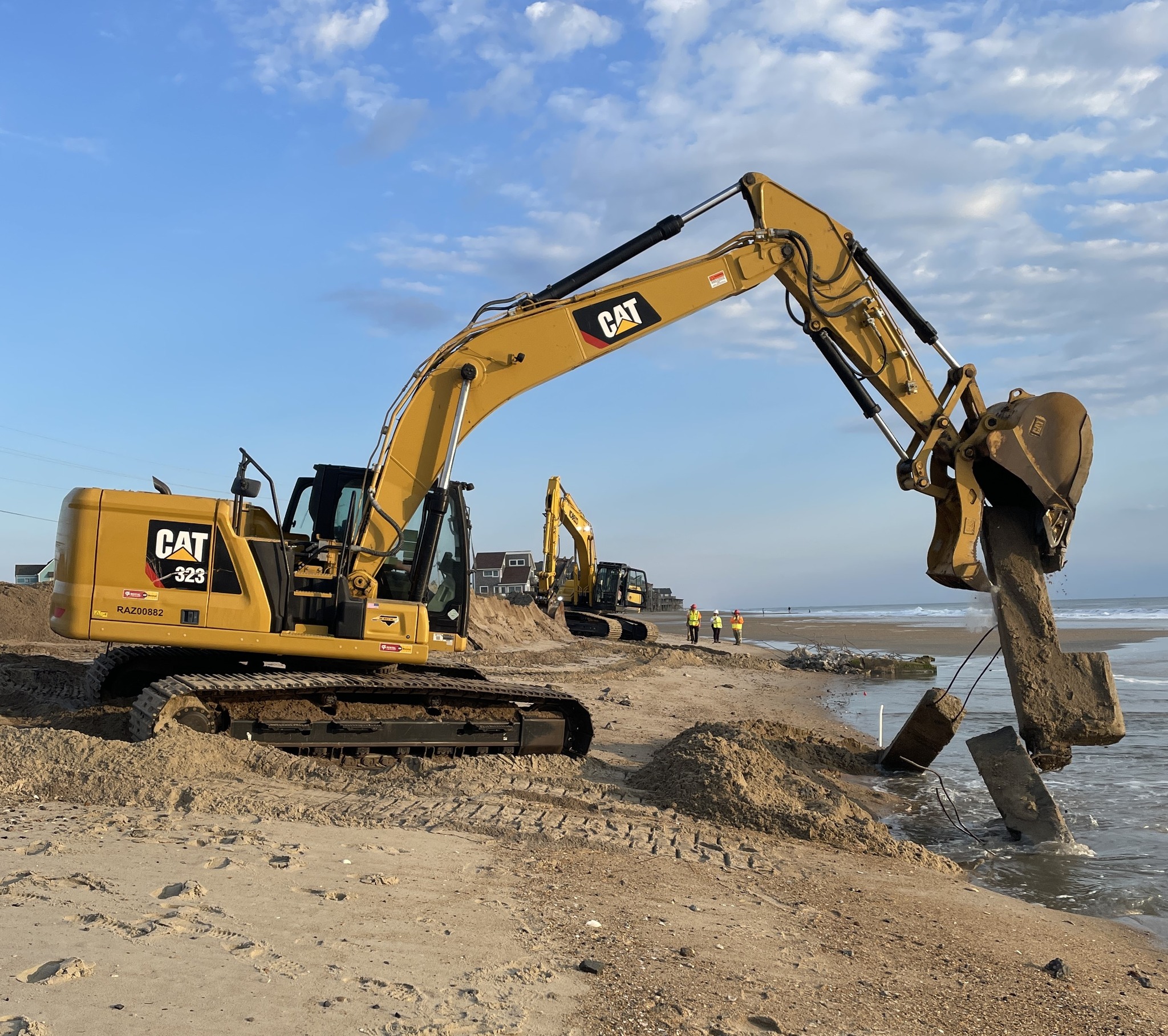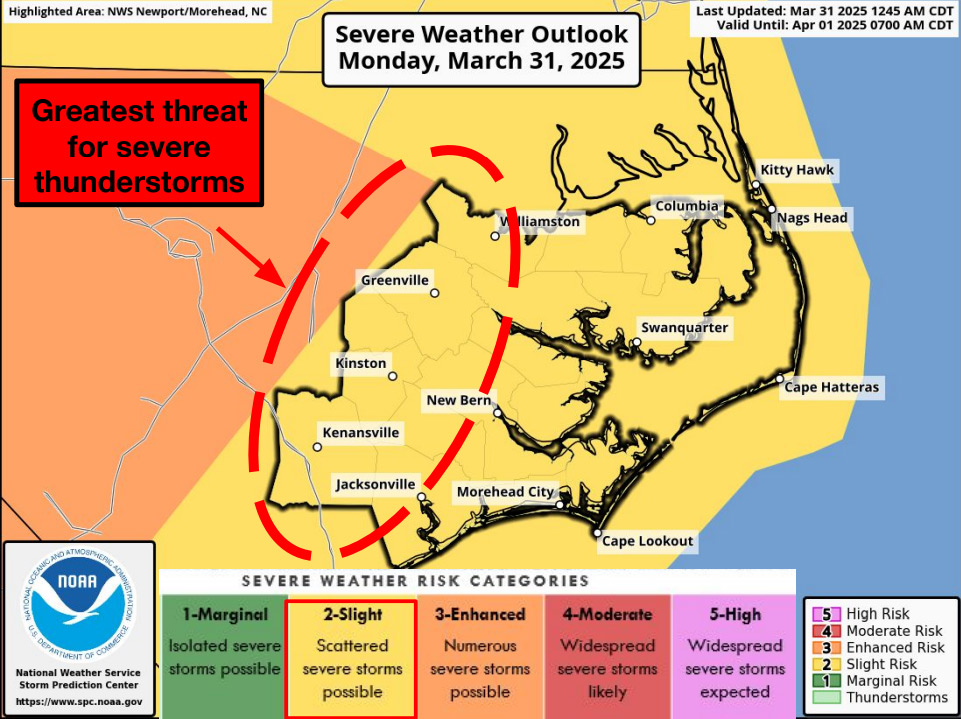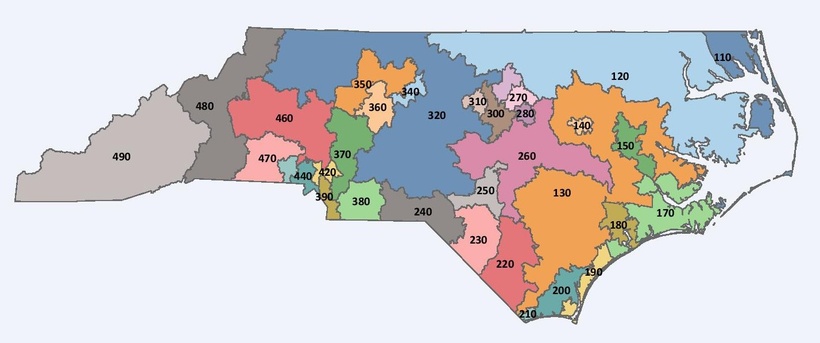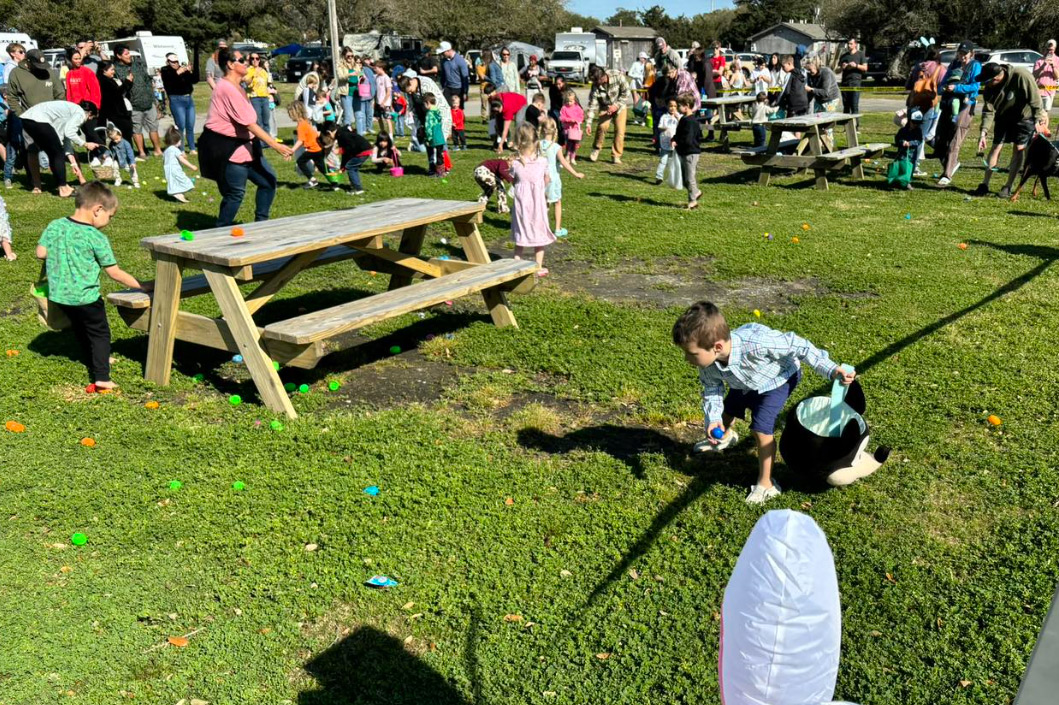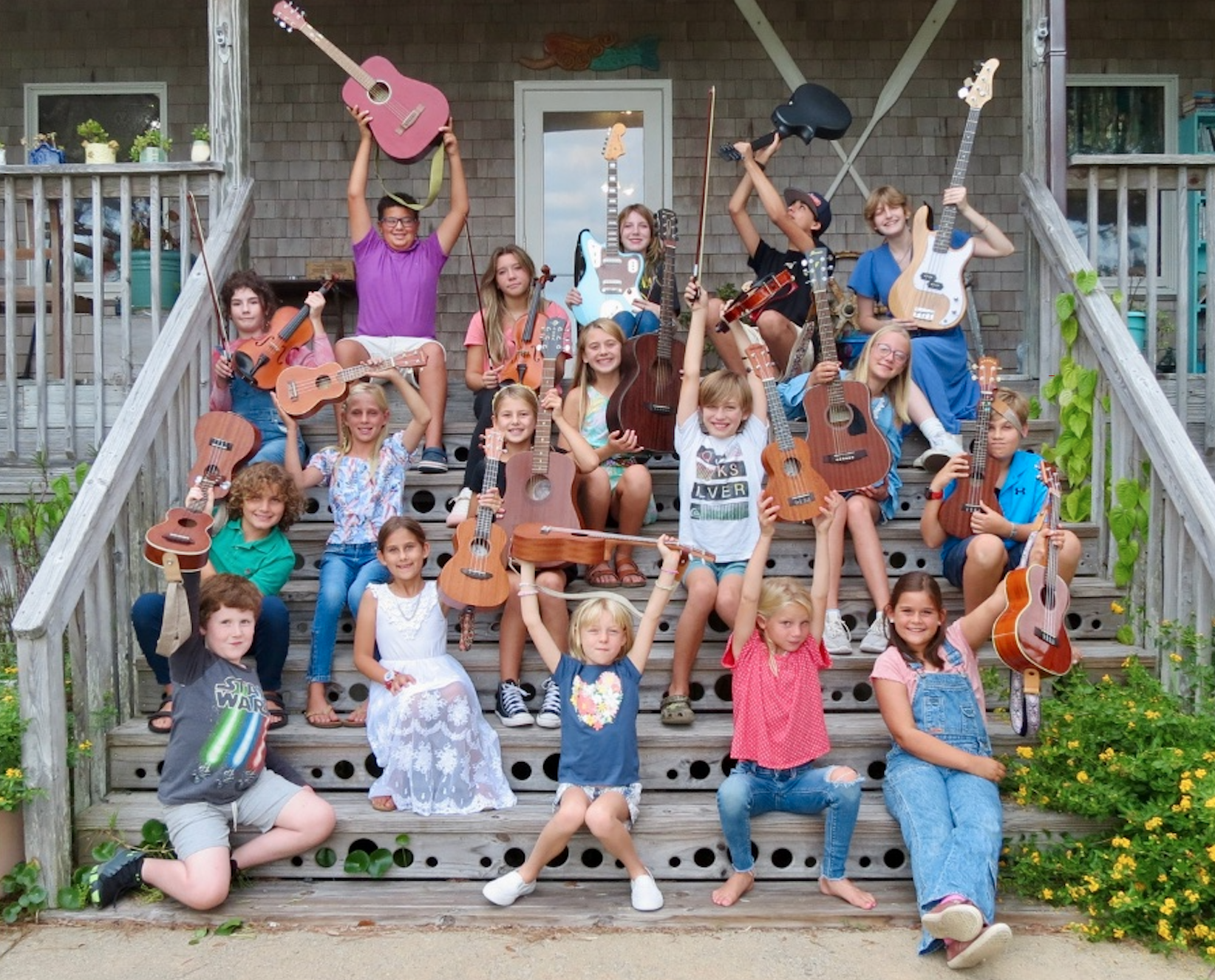COVID-19 and the cyberspace classroom
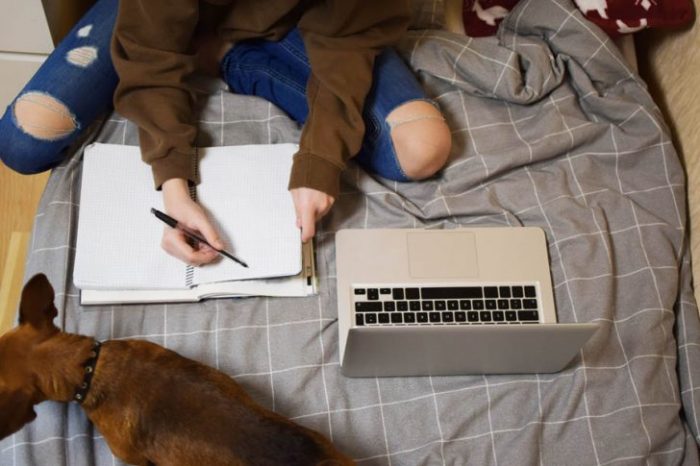
OBX teachers, students, parents adjust to online learning
For the second time in North Carolina history, our schools are closed from Kill Devil Hills to Asheville.
In 1918, schools were shuttered from two to four weeks trying to stop the spread of the Spanish Flu, the deadliest pandemic the world has ever seen.
On March 14, hoping to slow the spread of COVID-19, Governor Roy Cooper issued an executive order closing all public schools in the state. The schools remain closed and will continue to be closed until at least May 15, and quite possibly beyond that.
In the 1918 pandemic, schools simply shuttered their doors and children were sent home. In 2020, the school buildings are closed. But education goes on as online learning.
The classroom moves to the living room
Suddenly, living rooms have become classrooms and parents have been thrust into the role of being the face of education as teachers go online with remote instruction.
“I do feel like I jumped in the deep end with no swim lessons,” Kimber Smith said. Smith, with four children in Dare County Schools, has felt the full brunt of what is happening. “With that being said, we do feel like we’re doing a little bit better every week than we did before,” she added.
It is not just the parents, though, who are immersed in a new experience.
Hollie Lewis, the vocal music teacher at Manteo Elementary School, has taught school for 20 years, but never used online instruction “This is totally new for me in terms of instructing music online to students,” she said.
She has mixed feelings about it, pointing particularly to the importance of the classroom experience.
“For me personally, I miss my students. I would never want this to replace the human interaction and the in-person lessons of teaching music that we do,” she said. “But for me, I’m actually enjoying the creativity that comes with this type of teaching. Just because it’s something different. It opens up a whole new avenue of ways to present material to the students.”
Jessica Taylor teaches 8th grade science at Manteo Middle School. Her remarks echo Lewis’ concerns about how important the classroom experience is.
“I feel like the kids are responding, that they are turning in their assignments, that they’re going to benefit from this,” she said, before turning to the importance of a classroom setting.
Students “really need you to be there. They really need that interaction. Also with their peers. With remote teaching, how do you get your kids to interact with one another? I haven’t figured out that yet. That’s a big part of science. Group work, working with other people,” she said.
The teachers are not the only ones who feel it’s important to be in a classroom setting. Kimber Smith’s daughter, Kitty Hawk Elementary School 3rd grader Kiah, came right to the point.
“I usually like it at school because I can see everyone, and I learn better when I can see everyone. So, it’s a little bit harder for me to learn from online,” she said.
It’s not only the kids in earlier grades that miss the interactions that happen in school.
“Academically it’s easy, but being quarantined, it’s difficult socially,” First Flight Middle School 8th grader Kira Walters said. Her sister, Alanna is in 6th grade and agrees, saying, “The school’s really easy and I like doing it, but I like doing it in school.”
That sense of social isolation extends to high school as well.
“Online learning, personally I like. I can understand why people don’t because it’s not face-to- face. That would be one of the biggest problems. It’s mostly a social factor,” observed Jacob Askew, who is a junior at First Flight High School.
Askew also explains what he likes about online learning. “We have some websites, and we can get all of our work done through those sites,” he said. “I can work at my own pace. There’s obviously due dates, but I can be sure of my time.”
Keeping the connection between student and teacher
For teachers, finding ways to connect with their students is the key to making the online experience successful.
“I think the challenge is to engage. I do a five-minute video that I post to my Google Classroom each day,” Manteo Middle School’s Taylor said. “I talk about the assignment and give just a short lecture about the assignment. I think it’s probably good for them to see your face and hear your voice, even if they can’t interact with you directly.”
Kiah Smith’s third grade teacher, Jeanne Mouser, meets virtually with her class regularly, something that keeps Kiah connected with her friends.
“We have this thing called sharing. So my whole class gets to talk with my teacher. About how it’s going and stuff. I get to see my class then. A lot of them are on couches and stuff like that,” she said.
That personal connection is something that Hollie Lewis has been working on for her students. She has created videos of her lessons for the kids, trying to be as inclusive as she can.
“I have my remote learning videos where I’m creating music lessons to the kids. Then I have a section that is devoted exclusively to an online student link to the music curriculum we use in class so they can go through it that way if they prefer,” she said.
Specials such as music, PE, art and library are not being graded during online instruction so participation is voluntary. But the kids and teachers seem to be responding to what Lewis is doing.
“The first grade dual language teachers use a platform called SeeSaw and on the day their students would normally have music, they push out my site to the kids. And encourage them if you want to do music, do it,” Lewis said. “The children are sending back videos of themselves on this platform doing some of the music activities. There has been incredible participation. I literally cry every time I watch them.”
One of the most distressing things for a number of teachers and students has been the cancellation of school plays. Lewis and her students were deep into rehearsals for “Annie” when classroom instruction was canceled.
“When we left on March 13…we were really getting into the meat and potatoes of this musical. We choreographed all the numbers and we were running scenes,” she said. The kids, according to Lewis, had one overriding question. “Are we going to get to do the musical?”
“And the answer is we’re going to do everything in our power to make it happen. If we have to do it next fall and bring 6th graders back, we have the ability to do that,” she said. To keep her students focused on the play, Lewis has a page on her website where the kids can let her know they’re working on choreography, songs, and the script.
At the high school level, connecting with the students is still important, although, as First Flight High School AP Human Geography and Civics teacher Adam Herman points out, there are other factors involved.
“My kids are motivated by grades. The minute I post it, they’ve got it done,” he said. “I’ve only got a few kids who aren’t doing anything, but it’s been that way the whole year.”
Herman points out, though, that it’s not a one size fits all way working with the students. “From talking to people, there’s probably about a third of us doing what I’m doing. Just trying to keep it simple for the kids,” he said.
A lot of it is ‘trial and error’
In interviews with the Dare County Schools central office personnel, it is apparent that the district had begun thinking what would happen in an extended school closure by late January. Nonetheless, some educators may have been caught off guard by Governor Cooper’s March 14 executive order closing schools.
What becomes apparent when talking to the teachers about the new world of online-only instruction, is that they are adapting and experimenting to see what work and what needs improvement.
“I think a lot of it is trial and error. Seeing if one thing works,” Jessica Taylor said. “I’m still in the trial and error. This works and this doesn’t, that kind of thing.”
“It’s a learning curve. I open up a little bit each week,” is how Hollie Lewis described the experience.
One of the most important ways to evaluate how effective a teacher may be is how relevant they can make the material for their students.
“I put that thing [online courses] together, the week we had off,” he said. “I said, ‘This is perfect. I can tie this [the COVID-19 pandemic] right into my classes.’ I’m getting lots of questions every day. That’s been encouraging having that dialogue with the kids that way. I would rather have it face to face, but the fact that they aren’t afraid to type up a few questions and send them my way. I encourage them to do it.”
“A couple of kids are a little bit scared just knowing the facts. And I say it’s better knowing than not knowing and have some knowledge about it so you can do the right thing,” he added.
Taylor is also finding that she can offer her students relevant information about what is happening at the moment.
“Right now, we’re just finishing up ecology, which is perfect because it’s nice weather and there are things outside for them to do,” she said. “The next unit is…on disease. It’s on viruses. I’ve been thinking about the best ways to relate this to them because obviously the coronavirus fits right in there.”
It is difficult to know how successful several months of remote learning will be. For teachers, there are lessons in how to be effective in an online setting, and parents have gotten a window into how difficult teaching can be.
But the past six weeks have shown something else as well, how important our schools are in the community – for reasons that range from educational to social.
“It’s interesting,” Taylor said. “In my life I’ve never seen anything like this. It really makes you appreciate and see those things that you wouldn’t have noticed before. How important that it is going to school with your friends, interacting with your teachers. It’s the kind of thing you just take for granted. Now they don’t have anymore. It just makes you appreciate it in a different way.”



